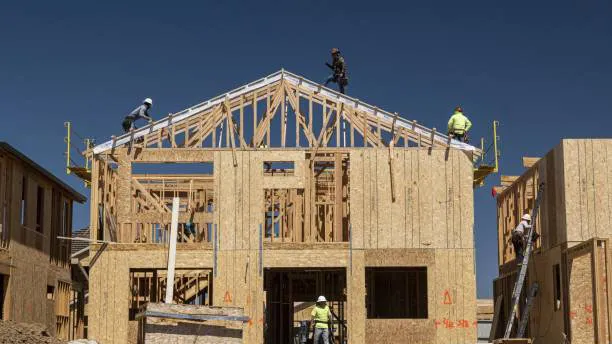
U.S. housing construction showed a modest rebound in July, with groundbreaking activity driven primarily by apartment developments even as high borrowing costs continued to weigh on single-family demand.
.jpeg)
According to the Census Bureau, single-family housing starts—the backbone of the housing market—rose 2.8% to a seasonally adjusted annual rate of 939,000 units. Permits for future single-family construction inched higher by 0.5% to 870,000 units, ending a four-month decline.
Overall, residential construction starts jumped 5.2% to 1.428 million units, fueled by a surge in apartment building. Groundbreaking for multi-family projects of five or more units soared 11.6% to 470,000 units, the strongest pace since May 2023. That marks more than a 50% increase in apartment construction over the last two months, reversing what had been a prolonged downturn since 2022.
Still, forward-looking indicators suggest challenges remain. Total building permits fell 2.8% in July to 1.354 million units, the lowest level in five years, reflecting a nearly 10% decline in multi-family permits. Economists surveyed by Reuters had expected weaker activity, projecting housing starts to fall to 1.290 million and permits to dip to 1.386 million.
High mortgage rates remain a key pressure point for the housing sector. Data from Freddie Mac shows the average 30-year fixed mortgage dropped to 6.58% last week, its lowest level since October, offering some relief to buyers. The rate, however, is still well above the historically low levels seen during the pandemic, limiting affordability.

President Donald Trump’s sweeping import tariffs have complicated the Federal Reserve’s path on interest rates. While central bank officials remain cautious about cutting borrowing costs until they are confident inflation won’t reignite, signs of a softening labor market have increased expectations of a September rate cut. Investors are now widely anticipating a quarter-point reduction, which has already contributed to easing mortgage rates.
The persistent affordability challenge has forced builders to adapt. A recent National Association of Home Builders survey revealed that more than one-third of builders are cutting prices to entice buyers. New housing inventory is now approaching levels not seen since late 2007, underscoring how slower demand is shaping the market.
Economists caution that the sector’s contribution to the broader economy remains weak. Residential investment contracted in both the first and second quarters of 2025, dragging on overall GDP growth. “For Q3, we expect residential investment will drag on GDP growth, but that should reverse in Q1 2026,” said Jeffrey Roach, chief economist at LPL Financial.
While apartment construction has emerged as a surprising bright spot, the sustainability of the trend is unclear given declining permits. The balance between high borrowing costs, builder incentives, and shifting demand will determine whether the recent uptick in housing activity can be sustained into 2026.
Originally reported by Dan Burns in Reuters.